|
On Sunday the 5th I
headed down towards Boundary Bay to see if I could find the Buff-breasted
Sandpipers that had been reported down there. They had been seen
at the turf farm on 72nd street. Appropriately enough, one of
my guide books says the buff-breasted "stops to forage in
the wet fields, turf farms, and rice fields" when migrating.
So I guess it was predictable that they had been reported there.
Anyhow, I'm not one
to walk on anyone's farm without their permission, so I walked
along the railroad tracks that border the farm to the north. (Well,
I didn't have permission to walk the tracks, either, but somehow
I'm more comfortable with that.) To make a long story short, I
didn't find the Buff-breasted Sandpipers. I did find a few birds,
but nothing too unusual. There was a small flock of Black-capped
Chickadees that was flitting around the turf farm fence and the
nearby bushes. Here's one of them.
|
|
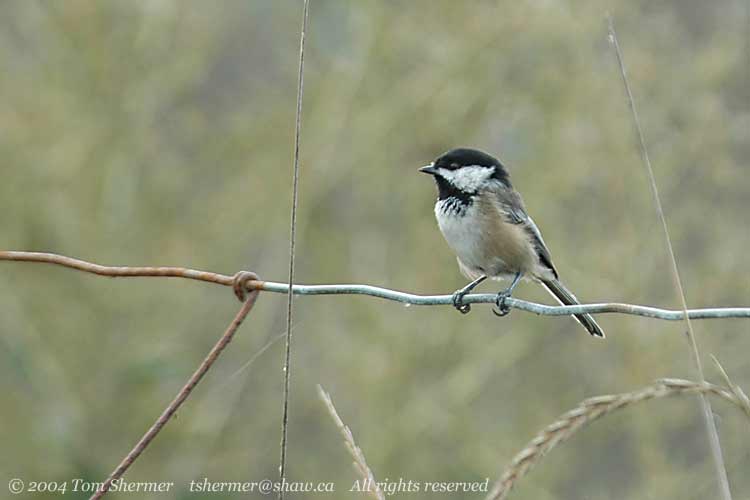 |
| I took a
few photos of some Song Sparrows, and then noticed some yellow showing
itself every now and then. I patiently waited for the yellow to
reappear, even at one point having to step off of the tracks to
let a train pass. Eventually my patience was rewarded and a warbler
popped out. It was a juvenile Common Yellowthroat. |
|
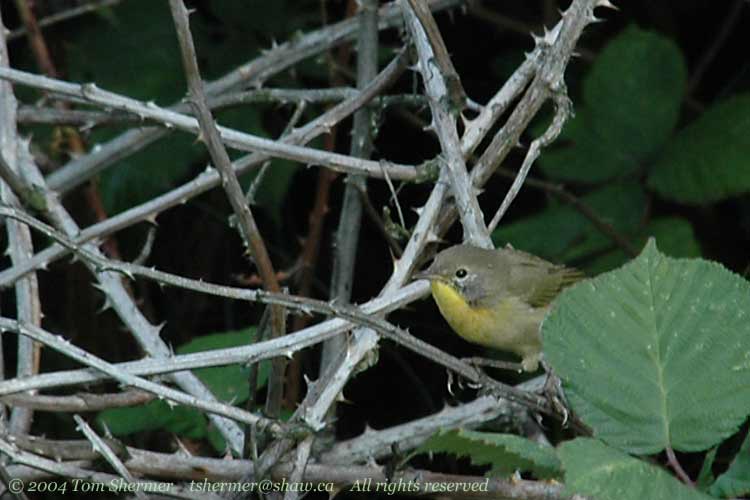 |
| Another
train came by, this one headed west to the coal port, and I decided
to head on to another location. As I was walking back to my car,
I heard a sound somewhere between a caw and a honk coming from my
left. Looking up, I saw a Sandhill Crane fly over, vocalizing the
entire time. He was a noisy one, that crane. |
|
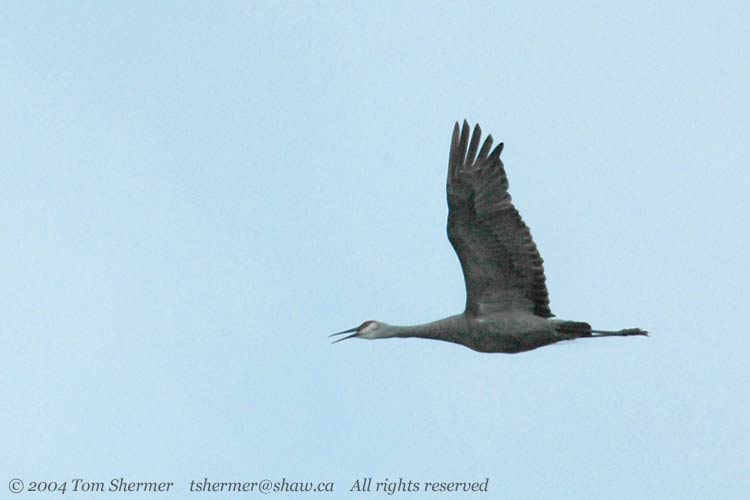 |
| I decided
to drive over to the Mansion, to see what was in the bay there.
On the way to the mansion is the farm that has the sheep which I
have photographed before. I stopped at the sheep farm to take pictures
of their sheep guardian, a llama. |
|
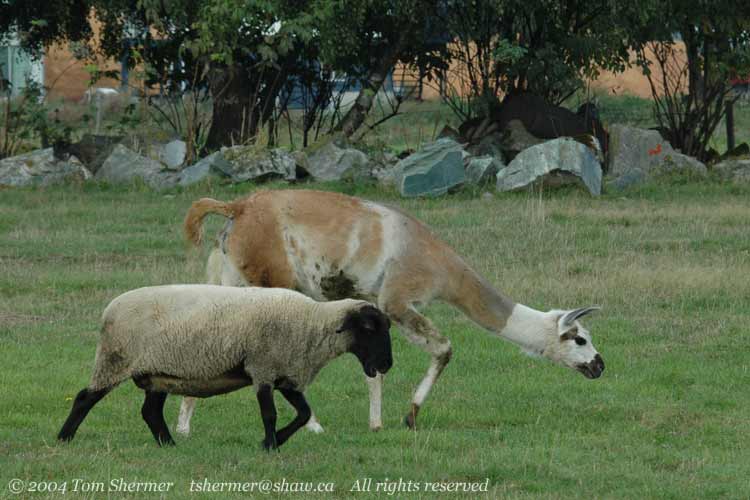 |
|
As I understand it,
llamas and alpacas are both good at chasing away predators (such
as wolves or coyotes). Both are social animals, but llamas don't
mind socializing with sheep or other such animals, whereas alpacas
will go loopy if they're not with a bunch of their own kind. So
some sheep farmers keep a llama or two with their flock to help
protect them.
There are some farms
'round these parts with alpacas, but generally they keep a whole
herd of 'em.
Well, I reached the
mansion and found the usual assortment of critters there. There
were Stilt Sandpipers and Long-billed Dowitchers and both sorts
of Yellowlegs. Here's a Lesser Yellowlegs, on the move.
|
|
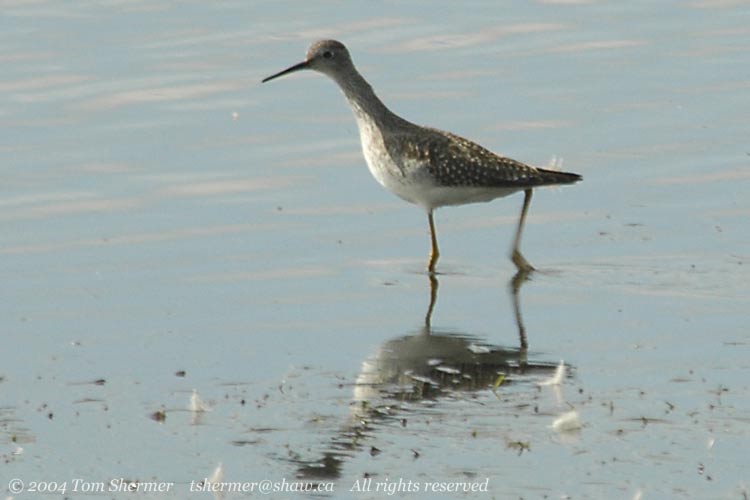 |
| I watched
a Greater Yellowlegs do an interesting thing: he caught a small
fish, and then dipped the fish back in the water a couple of times
before eating it. It was as if he was washing it off...maybe he
was. |
|
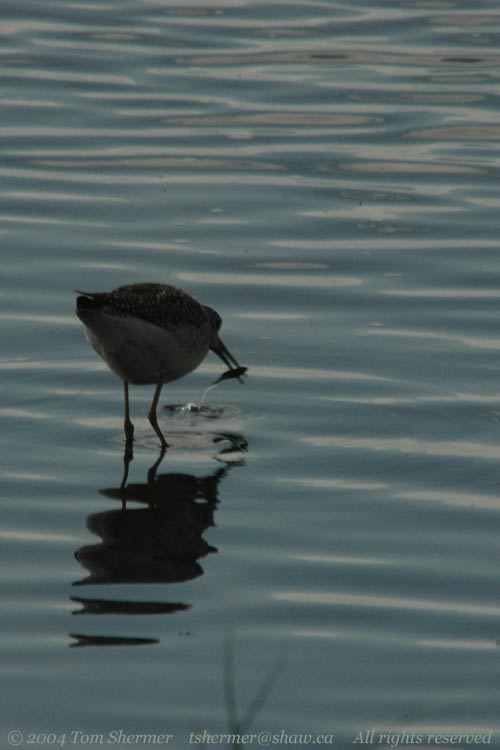 |
| I also got
this picture, which clearly shows the shape difference betwen a
Lesser Yellowlegs and a Greater Yellowlegs. The Lesser is on the
left; it has a shorter, thinner bill, a thinner neck and body, and
thinner legs. It's also not as long (bill to tail) as the Greater.. |
|
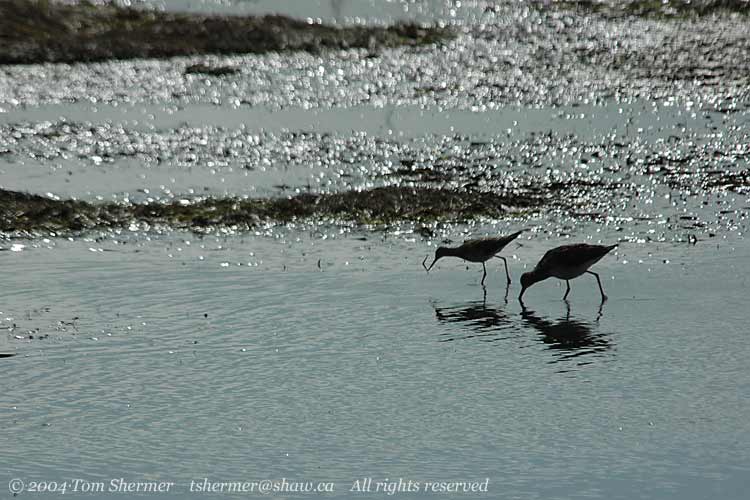 |
|
The situation with
the bomb scare the day before may have been hairy, but the current
situation was about to turn harrier. While I was scanning the
shorebirds, they suddenly took flight. A Northern Harrier had
cruised in and a yellowlegs.(or maybe a dowitcher) who had been
slow to react. Here's the Harrier, standing on his prey.
|
|
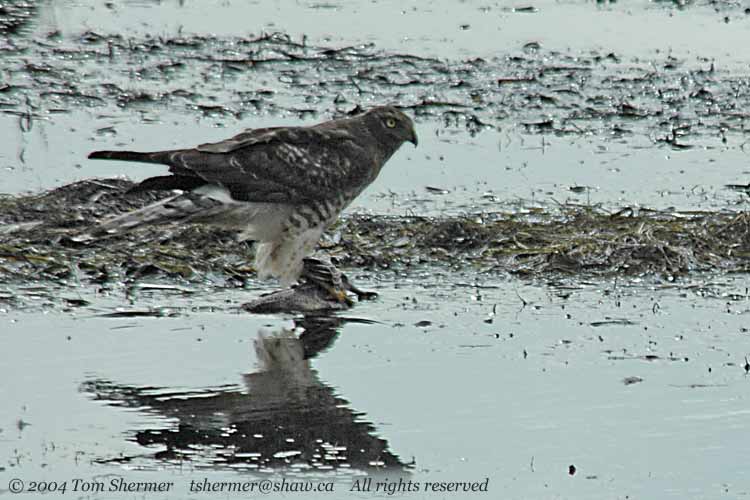 |
|
After standing like
this for about two minutes, he tried to take off with his victim.
|
|
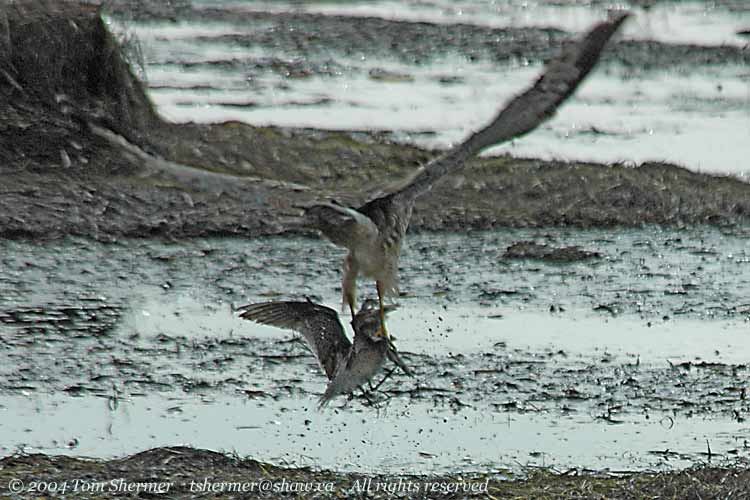 |
|
But the prey proved
too heavy or too hard to hold, and the harrier let it drop into
the mud. He flew about fifteen meters away and landed again.
|
|
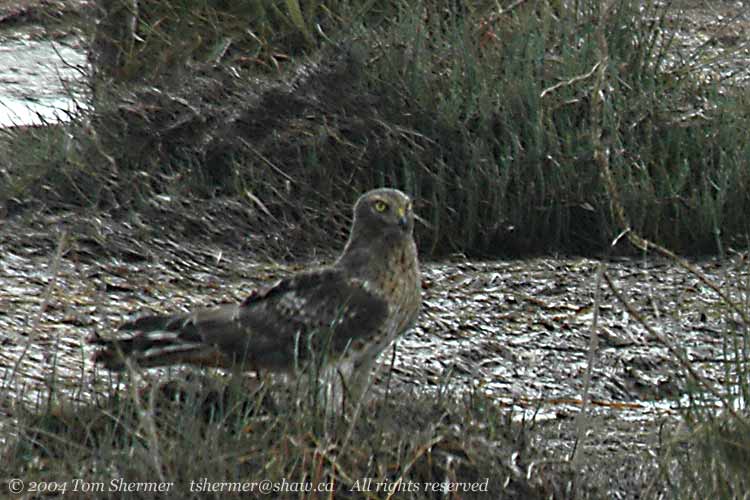 |
|
There he stood for
a good five minutes or so before deciding to fly off. Northern
Harriers are easy to identify in flight, because their white rump
is distinctive amongst hawks. This photo shows it plainly.
|
|
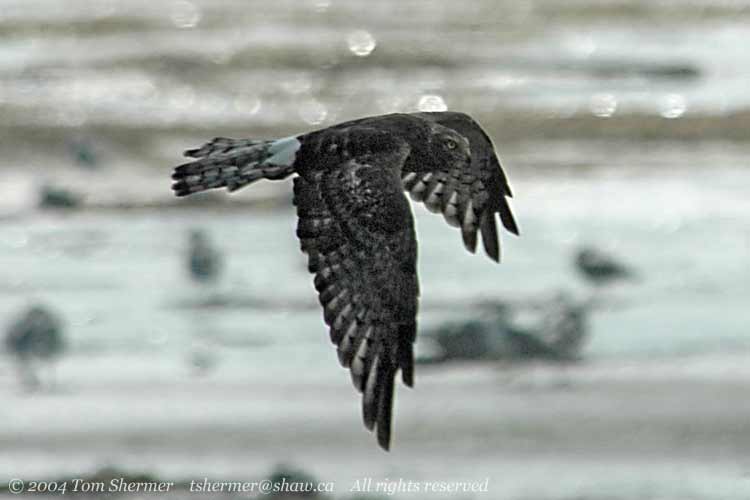 |
|
He didn't even try
to go back for the bird he had struck...I wonder why. Perhaps
he won't eat in the open.
There were some geese
farther out in the bay in front of the Mansion, and I took a few
shots of them. For some reason, this trio intrigued me. They remind
me of three gentlemen out for an evening stroll.
|
|
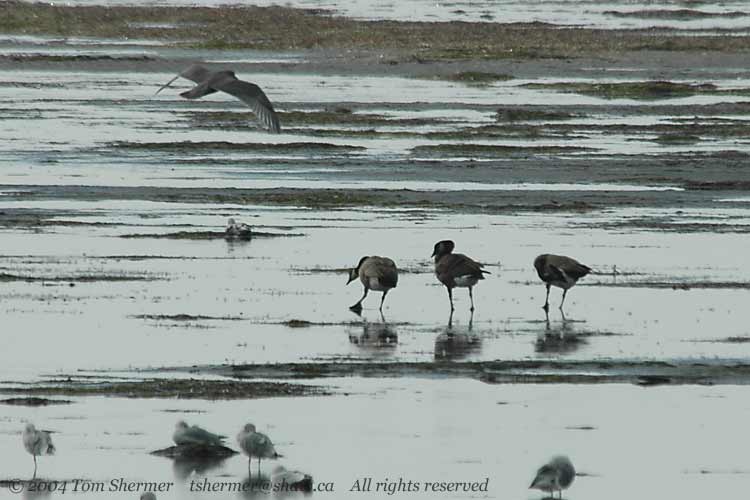 |
| My next
destination was the Tsawassen Ferry Jetty. I arrived near high tide
and found the sandbar that forms the seaward edge of the lagoon
covered with Double-crested Cormorants. |
|
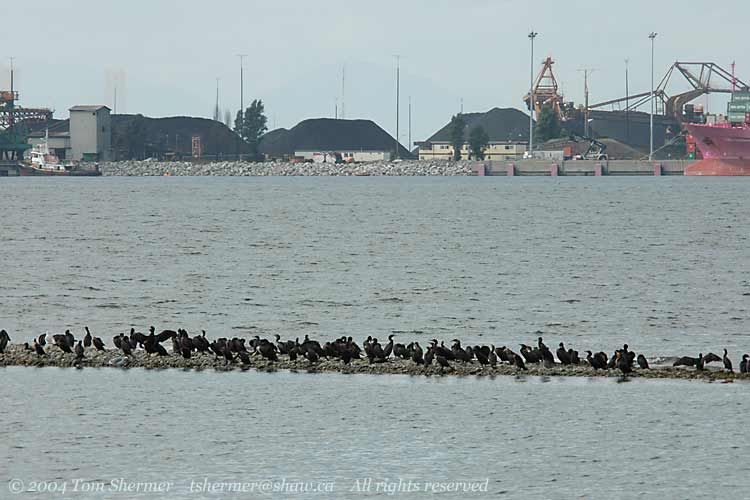 |
|
Double-crested Cormorants
have a bright, showy, orange bill. Here's a shot of one of them
that I got later when some flew nearer the jetty.
|
|
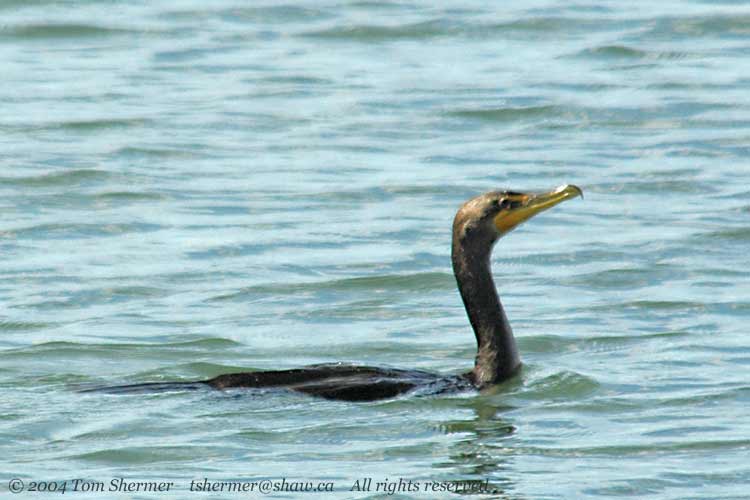 |
|
There were some parts
of the lagoon that weren't underwater, and a careful study of
these with my binoculars revealed the presence of at least three
Marbled Godwits. These guys have a very long bill, which is black
towards the tip and pink towards the head.
|
|
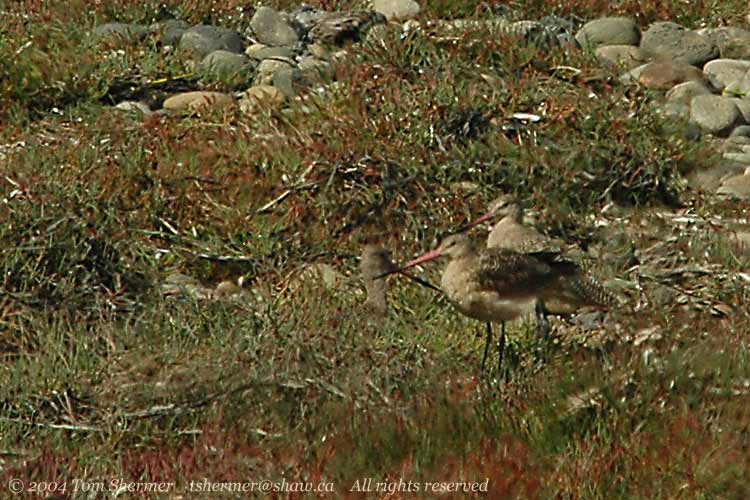 |
|
After watching the
godwits for a while, I went over to the other side of the jetty
to see what was around. I immediately encountered a type of gull
that I'd never seen before.
|
|
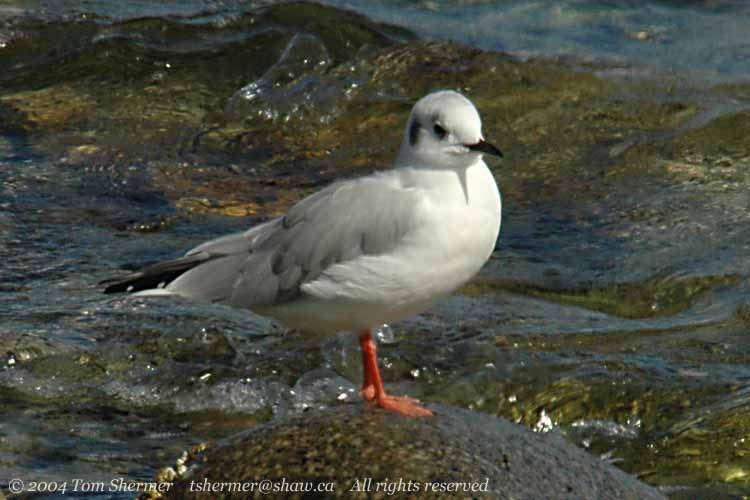 |
|
This little guy is
a Bonaparte's Gull. There were about 30 of them gathered around.
I headed north and
encountered Walter, another local bird photographer who I see
around quite a bit. I asked him about the gull and he's the one
that told me the species name. He had been taking pictures of
the Black Turnstones that were hopping about, and he was looking
for some sort of sparrow which he had caught glimpses of earlier.
I turned my attention
to said Black Turnstones. They're quite a neat shorebird, with
a rather plump shape.
|
|
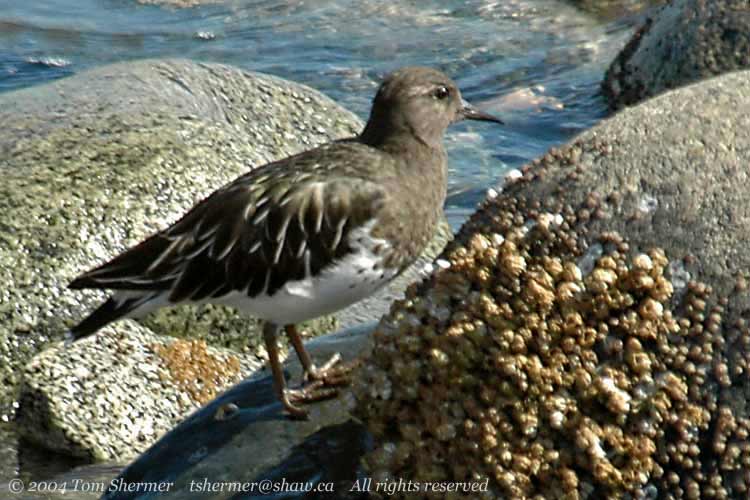 |
|
It was about 2:30 in
the afternoon, and I had been at it for about five hours, so I
was getting rather tired. I decided to go get lunch, but on my
way I saw the local Black Oystercatchers and had to take a few
shots.
|
|
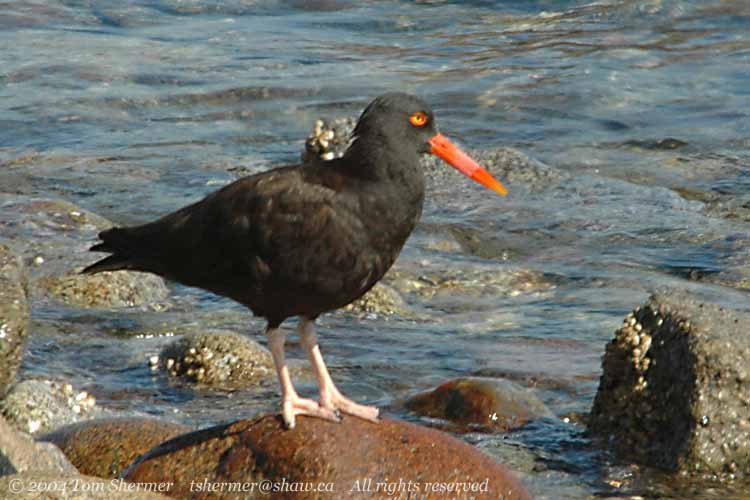 |
|
From there it was on
to my first meal of the day and home to sort through my photos.
Your follower of all
things fowl,
Tom
|
|